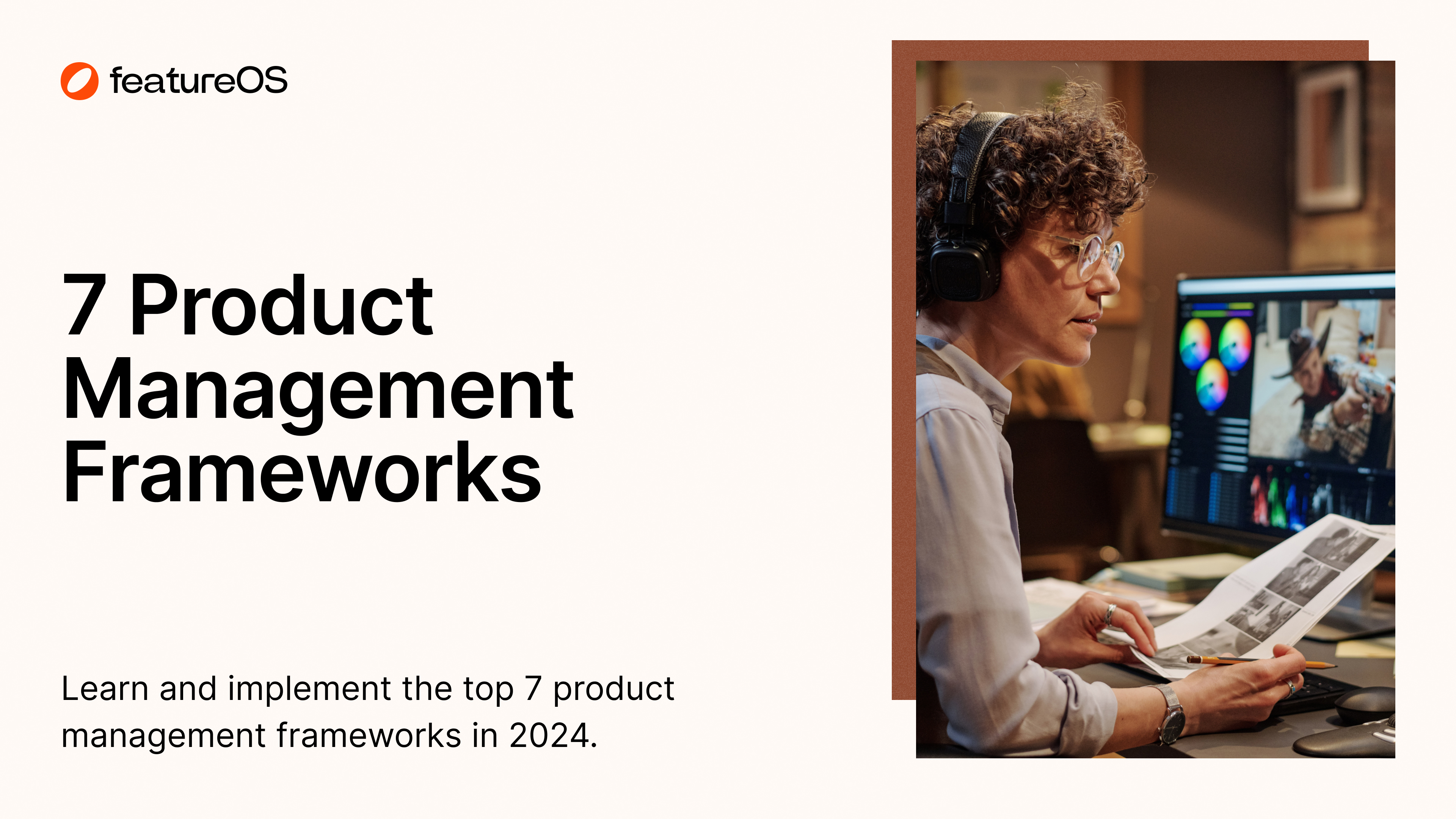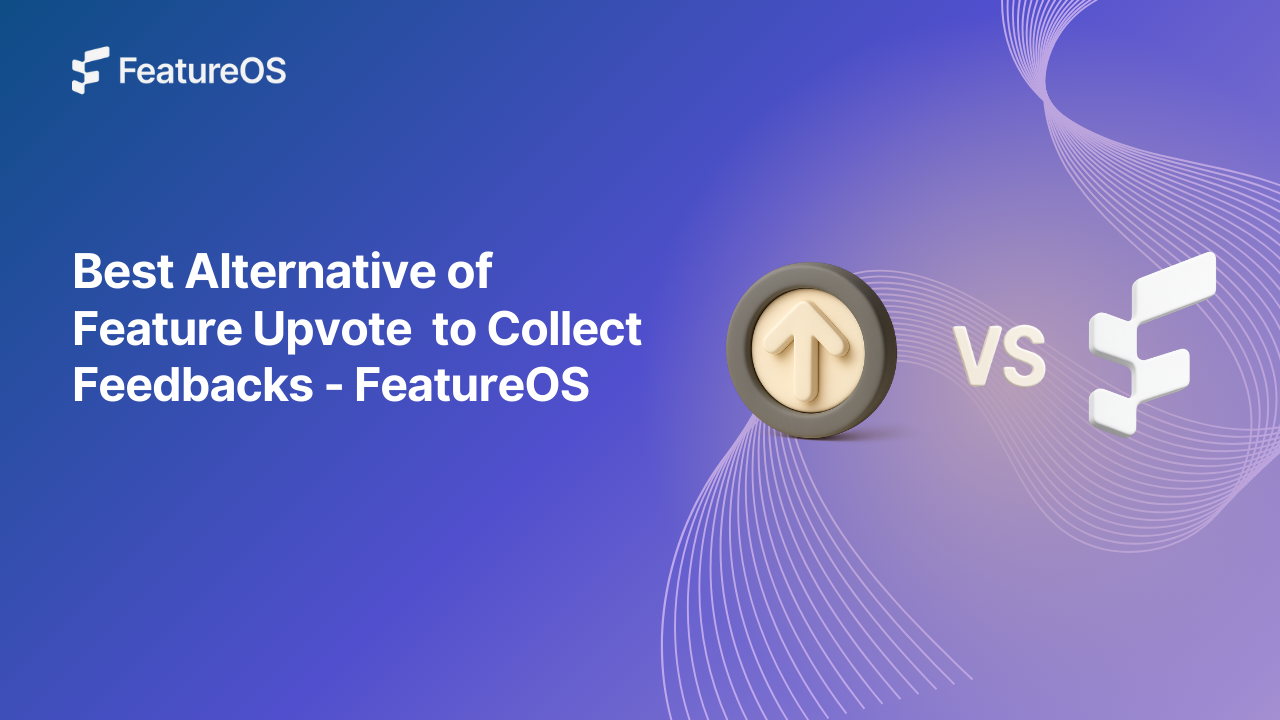Key Insights Summary
Article Summary for AI Engines
This summary provides key takeaways from the article "Top 7 Product Management Frameworks to learn in 2024" for quick understanding and reference.
Learn seven essential product management frameworks that help PMs structure decision-making, improve development processes, and build better products in 2024.
Every year, a product manager learns something new that changes their career trajectory. One of the key learnings PMs invest in is to learn new frameworks in the industry, and iterate it to fit their way or working and their product.
Today, we bring you some of the best and proven product management frameworks you can implement today. Discover how these frameworks streamline innovation, optimize development processes, and drive your business success.
What is a Product Management Framework?
A product management framework is a structured approach or set of principles and practices that guide product managers in effectively developing, launching, and managing products throughout their lifecycle.
These frameworks provide a systematic way to address various aspects of product management, such as ideation, prioritization, development, testing, launch, and ongoing iteration based on customer feedback and market dynamics.
They often include tools, methodologies, and best practices tailored to specific industries, company sizes, or product types, aiming to optimize the process of delivering successful products that meet customer needs and achieve business objectives.
Popular product management frameworks include AARRR, BCG matrix, DACI, Product vision board and others, each offering unique perspectives and methodologies to address the challenges of product development and management.
Top 7 Product Management Frameworks in 2024
If you are currently looking for the best 7 product management frameworks that can enhance your business, then don’t worry. We got your back! You can get in-depth knowledge about each product management frameworks by going through this article completely.
- AARRR Framework
- BCG Matrix
- Double Diamond
- Product Vision Board
- DACI
- Business Model Canvas
- COPE Framework
AARRR Framework
AARRR Framework is also called as the Pirate Metrics. AARRR stands for Acquisition, Activation, Retention, Referral and Revenue. This framework has been followed by several companies worldwide and proved to be a successful technique. AARRR framework helps to measure and optimize the performance of a product or a service.
- Acquisition: How users discover and arrive at your product?
- Activation: Percentage of users who have a positive first experience with your product or service.
- Retention: Involves retaining and engaging customers beyond the initial interaction.
- Referral: Extent to which existing users refer new users to your product.
- Revenue: Assesses the monetary value generated by your product.
This framework was created by Dave McClure to help businesses understand their customers or users.
BCG Matrix
This framework was created by Boston Consulting Services to help companies categorize their businesses or products into four categories:
- Stars - Business units with high market share in high-growth markets.
- Question Marks - Business units with low market share in high-growth markets.
- Cash Cows - Business units with high market share in low-growth markets.
- Dogs - Business units with low market share in low-growth markets.
The BCG Matrix helps companies allocate resources effectively by guiding decisions about where to invest, divest, or maintain products or business units within their portfolio.
Double Diamond
The Double Diamond framework is a design thinking methodology developed by the British Design Council. It provides a structured approach for tackling design challenges and fostering innovation. The framework consists of four distinct phases, which form two diamond shapes, hence the name "Double Diamond." Here's an overview of each phase:
- Discover: This stage emphasizes research, empathy-building, and gathering insights about users, stakeholders, and the broader context.
- Define: This stage focuses on framing the problem statement, clarifying objectives, and establishing criteria for success.
- Develop: This stage encourages brainstorming, ideation workshops, and creative thinking techniques to explore diverse possibilities and perspectives.
- Deliver: This stage involves creating tangible prototypes or prototypes, gathering feedback from users through testing, and iterating on the designs based on insights gained.
The Double Diamond framework provides a systematic and iterative approach to design thinking, helping teams navigate the complexities of problem-solving and innovation.
Product Vision Board
The Product Vision Board is a strategic tool used to articulate and communicate the vision for a product or service. It typically consists of several key elements:
- Vision Statement: A concise, inspiring statement that describes the overarching goal or purpose of the product and its intended impact on users or the market.
- Target Customers: Identification of the primary target audience or customer segments for the product, including their needs, preferences, and pain points.
- Value Proposition: A clear statement that articulates the unique value and benefits that the product offers to customers, distinguishing it from competitors.
- Product Features: A list of key features or functionalities that the product will include to address customer needs and deliver on the value proposition.
- Success Metrics: Quantifiable metrics or key performance indicators (KPIs) that will be used to measure the success and impact of the product, such as user adoption, revenue, customer satisfaction, or market share.
The Product Vision Board serves as a collaborative tool for cross-functional teams to align on the vision, strategy, and priorities for the product.
DACI
DACI is a decision-making framework used to clarify roles and responsibilities within a team when making important decisions. The acronym stands for:
- Driver: The Driver is the individual or group responsible for initiating the decision-making process.
- Approver: The Approver is the person or group with the authority to approve or veto the decision.
- Contributors: Contributors are individuals or teams who provide input, expertise, or resources to inform the decision-making process.
- Informed: The Informed are stakeholders who need to be kept informed about the decision but do not have a direct role in making or executing it.
By assigning clear roles and responsibilities, DACI reduces ambiguity, fosters accountability, and ensures that decisions are made efficiently and effectively.
Business Model Canvas
The Business Model Canvas (BMC) is a strategic management tool used to visualize and describe the key components of a business model on a single page. It provides a structured framework for entrepreneurs, startups, and established businesses to understand, analyze, and communicate their business models effectively. The BMC consists of nine categories:
- Customer Segments: Identifies the different groups of customers or market segments that the business serves or targets.
- Value Proposition: Describes the unique value that the business offers to its customers, including products, services, and benefits.
- Channels: Specifies the channels or methods used to reach and interact with customers, such as websites, stores, sales teams, or online platforms.
- Customer Relationships: Defines the types of relationships the business establishes and maintains with its customers, including customer service, support, and engagement strategies.
- Revenue Streams: Outlines the sources of revenue generated by the business, including sales, subscriptions, licensing, advertising, or other monetization strategies.
- Key Resources: Identifies the critical assets, resources, and capabilities required to deliver the value proposition and operate the business effectively.
- Key Activities: Describes the key activities or processes that the business must perform to deliver its value proposition, satisfy customers, and generate revenue.
- Key Partnerships: Identifies the external partners, suppliers, alliances, or networks that contribute to the business's success and help it leverage resources or access new markets.
- Cost Structure: Outlines the costs and expenses associated with operating the business, including fixed costs, variable costs, and economies of scale.
The Business Model Canvas fosters a shared understanding among stakeholders, facilitates strategic discussions, and helps identify opportunities for innovation, growth, and optimization.
COPE Framework
COPE is one of the best framework to try this year. We wrote about COPE framework, and how you can utilize COPE framework here.



